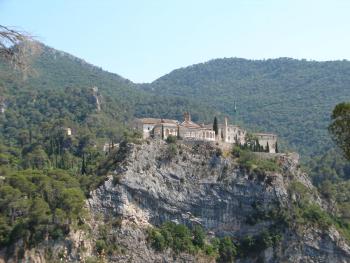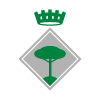
Cardó Mountain
The Cardó mountains make up one of the most charismatic mountains in Terres de l'Ebre. Most of the massif extends between the municipalities of Benifallet and Rasquera. Its inner slope descends to the Ebro, to the south and south-east it continues along the Boix mountain range. The steep Cardó valley, open to the north-west, is drained by the Cardó ravine, a tributary to the left of the Ebro. In this area, rainfall is scarce but the permeability of the limestone rocks causes underground currents that give rise to medicinal springs that drain through the steep cliff of Sallent, crowned by the spa, and the old Carmelite convent of Cardó. The ridge culminates in the Creu de Santos and is crossed by horseshoe paths that connected Benifallet and Rasquera with Tivenys and Tortosa. The old medieval towns of Sallent, Cardó and Costumà, to the north, and especially of La Fullola and La Bassa de Cascall have completely disappeared.
Cardó. Convent and Spa
The Desert of Cardó, which became a spa in the 19th century, sits at the top of the spectacular Salt del Frarer cliff. The works began in 1604 and the first buildings were built by three monks and a labourer. In 1606 the construction of the 14 hermitages began, of which only 13 remain, where the Discalced Carmelites established their community. Due to the Carlist War and the confiscations of Mendizábal, the Carmelites had to abandon Cardó.
In the 19th century, businessmen from Tortosa decided to build a restaurant-spa with the buildings that had been abandoned for two years. During the 19th century, the spa enjoyed of a great fame until the Civil War was declared.
During the Civil War the spa became the headquarters of the International Brigades and in 1938 an emergency hospital was set up for the republican army during the Batalla de l’Ebre. The spa reopens in 1940, until 1967 when it was finally abandoned.
It was bought in 1967 and turned into a bottling plant that had a few different owners until 2007 when bottling activity finally ceased.




